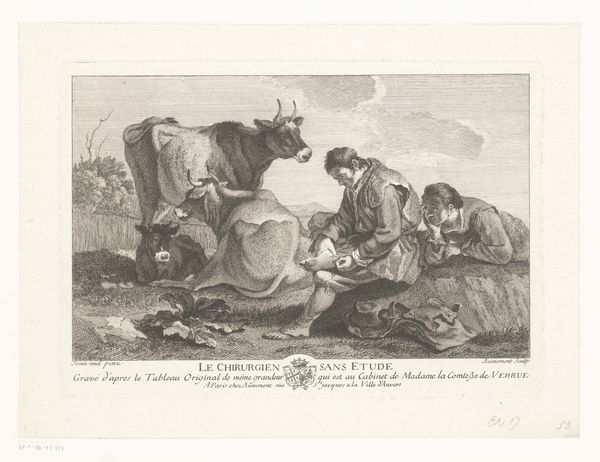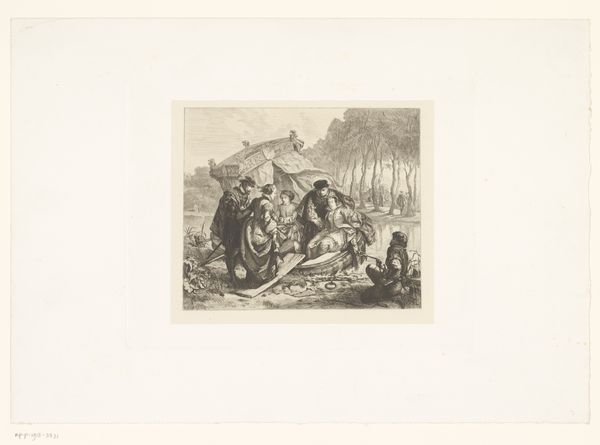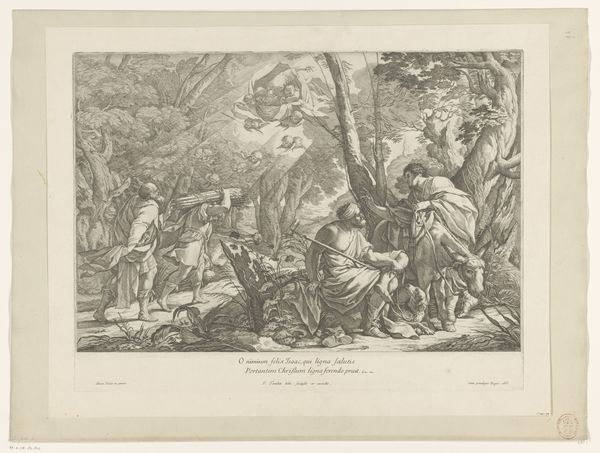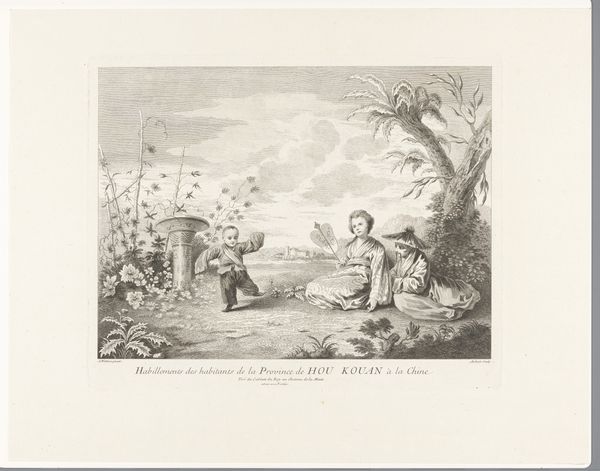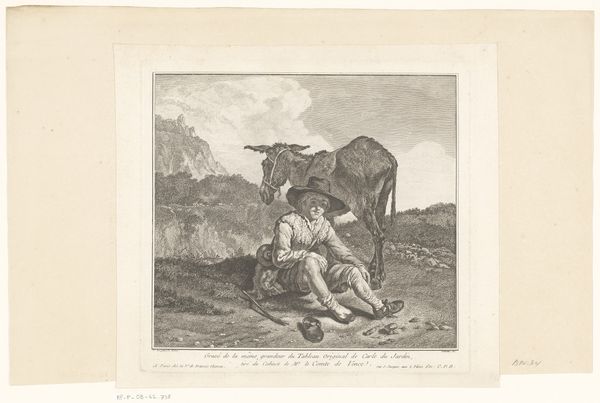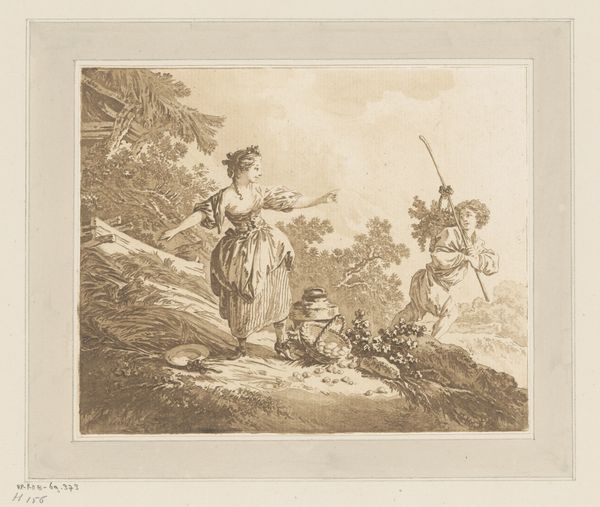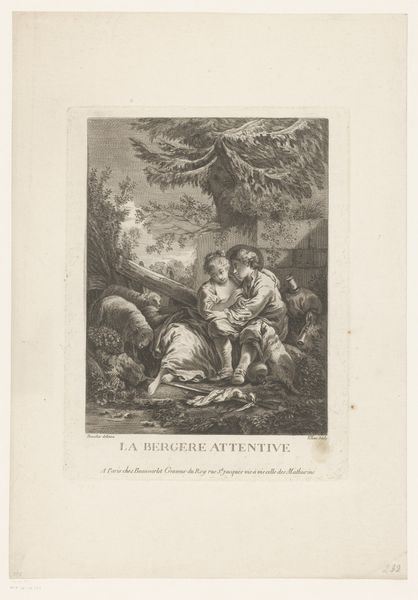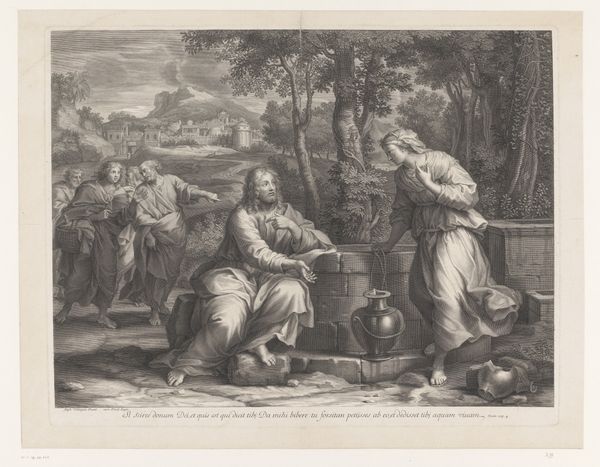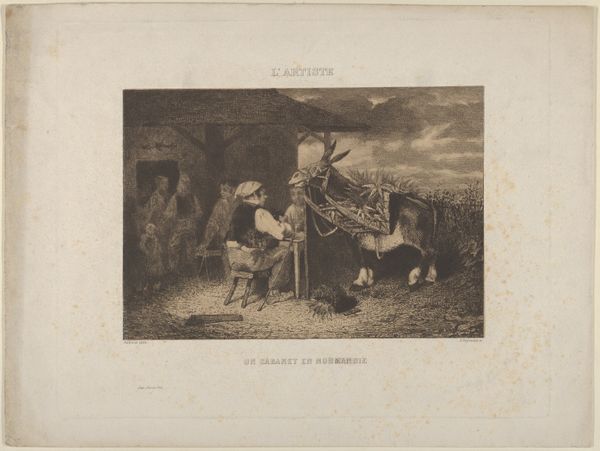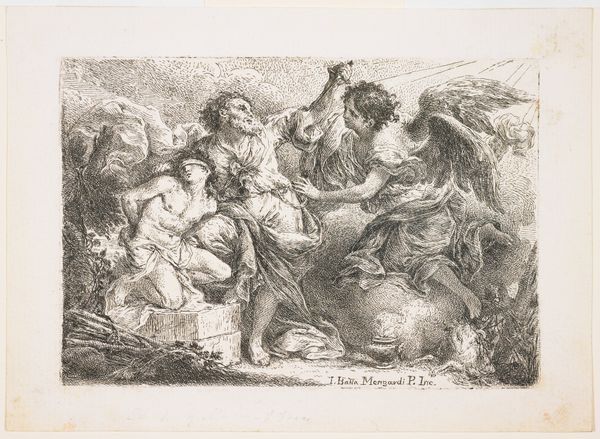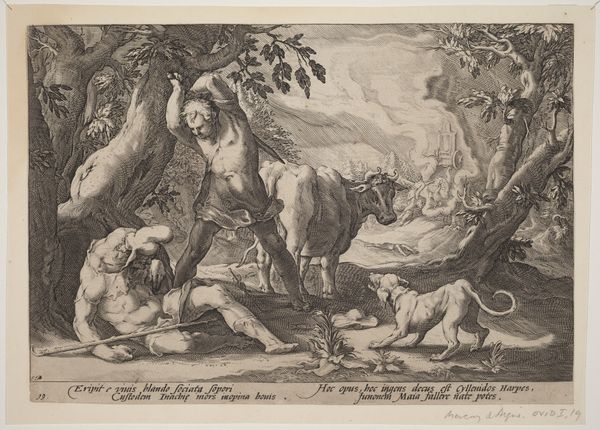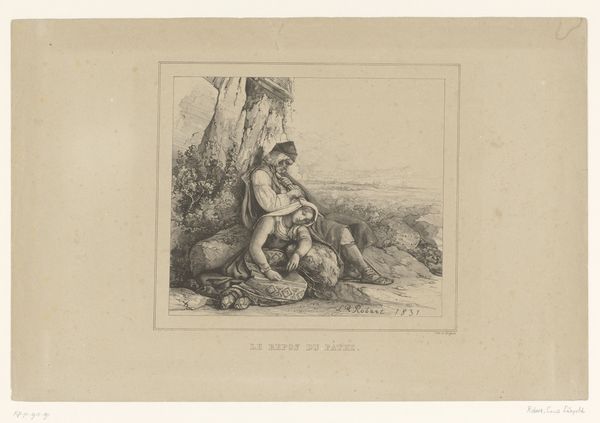
engraving
#
baroque
#
old engraving style
#
landscape
#
figuration
#
genre-painting
#
engraving
Dimensions: height 170 mm, width 256 mm
Copyright: Rijks Museum: Open Domain
Curator: Here we have "Doedelzakspeler met geiten" or "Bagpipe Player with Goats," a piece made sometime between 1729 and 1769 by Pierre François Beaumont. It's an engraving, with all the lovely detail that implies. What’s your first take? Editor: Pastoral, isn't it? A sort of peaceful melancholy seems to emanate from it, although the texture looks dense and almost overwhelming, given the intricate lines of the engraving. Curator: Absolutely, I can sense that, too. Think about the process Beaumont used. Engraving involves cutting lines into a metal plate, filling them with ink, and then pressing that onto paper. That’s labor, meticulous, careful labor to produce a work about leisure! The bagpipe player himself seems lost in reverie. Editor: Right! There’s an inherent tension in how the work was made, which clashes brilliantly with its apparent subject matter. Look at the player’s clothes, his floppy hat, and consider that all those visual textures are mediated by the artist's hand and the press itself. The goats aren’t doing anything particularly evocative either; one lies, one watches. Curator: And that’s a genre scene for you – taking ordinary, rustic moments and giving them an almost heroic scale through artistry. It almost feels like Beaumont wanted to ennoble rural life… Editor: Or maybe comment on how distanced the refined culture he served was from that lifestyle. Remember, prints were made for a growing market; relatively accessible, often disseminated for education, documentation, and display. This puts "high art" directly into conversation with the domestic space, blurring established social boundaries between leisure and the home and labour. Curator: Interesting point… Beaumont is playing with the popular themes of the time, creating a serene moment, yet through the materials he is subtly hinting at the economic structures which determine that those peaceful moments occur? It certainly makes one ponder. Editor: Precisely. It's not just about the content, but about how the medium reshapes our understanding. These considerations on the methods by which something is rendered bring attention to these kinds of structures and boundaries. Curator: Exactly. Thanks, that made me reflect more deeply on Beaumont’s practice and impact. Editor: My pleasure. The more we scrutinize art’s materiality and origins, the better we recognize its power and consequences.
Comments
No comments
Be the first to comment and join the conversation on the ultimate creative platform.
